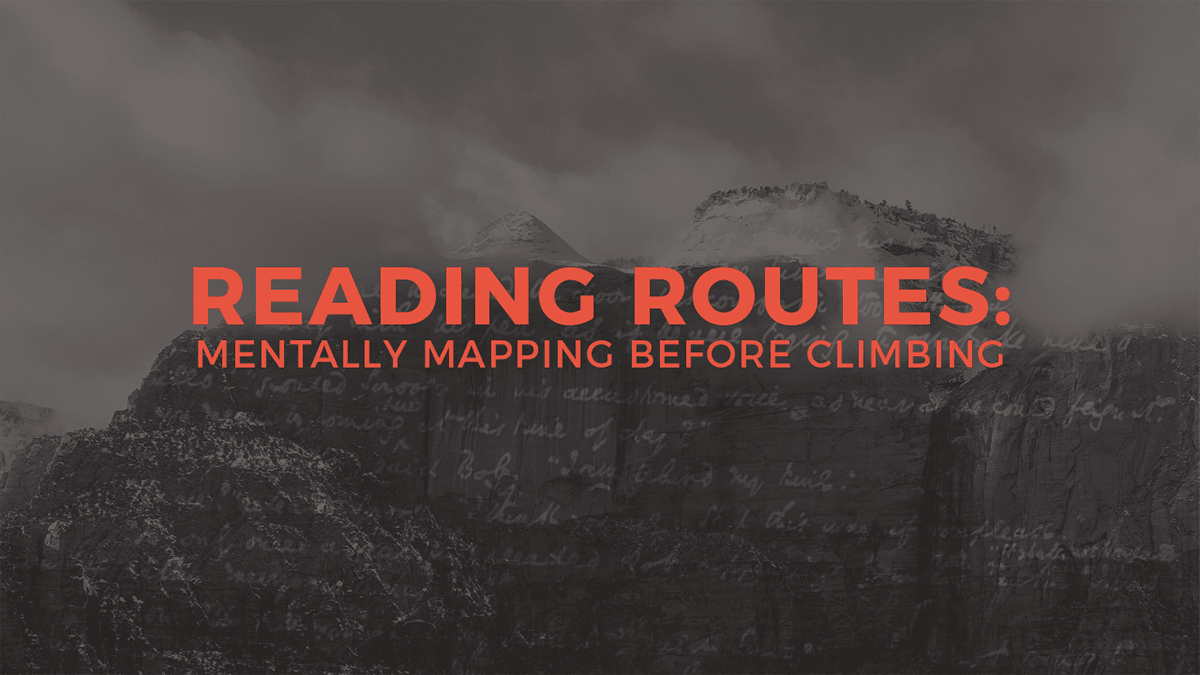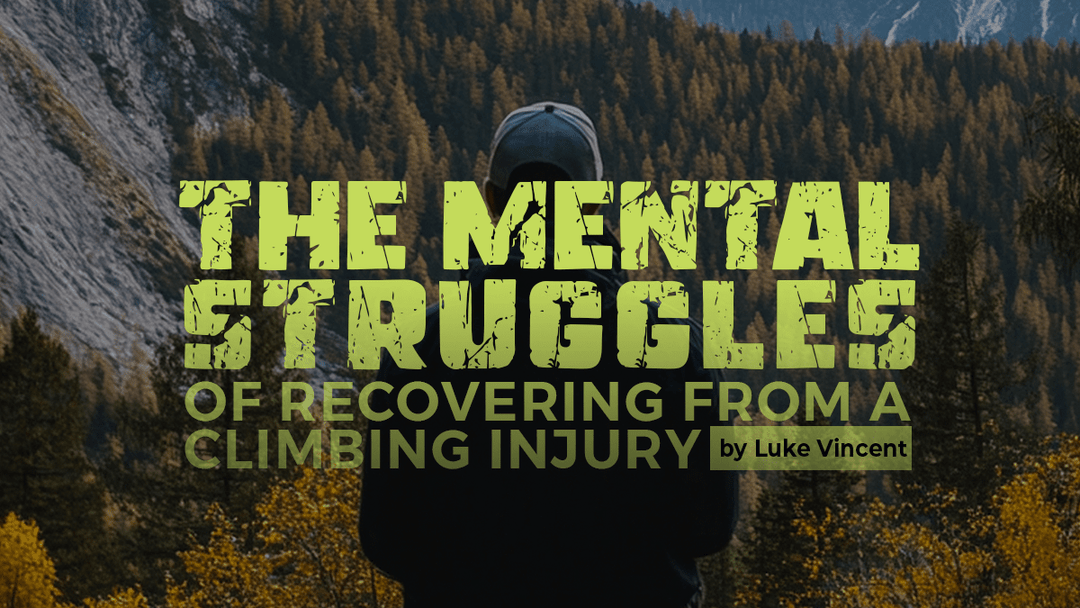Reading Routes: How to Mentally Map Out Your Climb

Climbing isn’t all about the physical; much of it is mental, as you’ve probably come to find out if you’ve been at the sport for awhile. A considerably large and critical part of the mental aspect is the planning, or reading of climbing routes – read on to learn more:
Why Read?
Reading a route is the climber’s way of evaluating the task at hand; it’s about coming up with a game plan to save you time, energy, and frustration. While reading requires a good amount of practice, the benefits are definitely worth the patience!
Climbing is all about movement. The science of how the body maneuvers, shifts its weight to achieve different centers of gravity, and propulsion all come into play. You, as the climber, are the student of your own body and there is much to discover that will reap great benefit.
Taking the time to survey a route can make your climb more decisive and fluid. All of the sudden the climb doesn’t feel like an uphill struggle but rather a rehearsed piece of performance art. You’ll find yourself making fewer mistakes, finding hidden rest spots you would have missed before, learning the optimal positioning for clipping, and changing misplaced hands and feet less frequently. All of these add to a stronger, more enjoyable climb and to the reward of reaching the top.
How to Plan a Climb Sequence
The first task when reading a route is to inspect the climb from many angles. If your only viewpoint is straight up, you might very well miss some critical beta. Look from the side to find hidden sidepulls; look from far away to scope out the last few moves of the pitch, and don’t forget to sit down below. All these fields of vision help you gather the most data to develop the best solutions.
Next, distinguish the holds of the entire climb. Start with handholds and then place footholds accordingly. Having several foot options for each handhold can assist you in problem-solving before you even get on the wall. After you’ve finished mentally planning the holds, mime them while still on the ground. Visualize the body movements from one hold to the next and allow your body to move through them.
After miming, it’s time to look for clipping holds and rest spots. With your hands and feet outlined, you can more easily find these key areas and take advantage of them.
Finally, review your entire climb. Visualization and “walking through” your body movements are powerful tools for any athlete. But the catch is: don’t be married to your planned climb. Having read a route allows you to be equipped with an approximated roadmap, but don’t be afraid to adjust while you’re up there.
Things will come up that you didn’t see or expect. That’s the fun part! Go as prepared as you can and accommodate as you go. Changing just one or two sequences of an entire climb on the fly is much easier than getting on a wall with no plan at all.
At the Gym
If the walls at your gym could talk, they’d tell you that someone specifically designed them. Like a choreographer planning what his dancers will look like with each created movement, so the designer choreographed what you will look like climbing his/her wall. You get the honor of decoding their suggested sequences. The gym is the perfect spot to start your route reading career because of this.
Look for clues as you plan. Handholds will generally be larger than footholds and they will most likely be covered in chalk dust from other climbers. Footholds are usually smaller and marked with black rubber scuffs. Take note of these hints as you strategize.
Lastly, try your best not to be self-conscious. Yes, you may feel funny sitting at the bottom of the wall miming your way through the air as you imagine your climb. (Although, it’s not much different than air guitar!)
But guess what – climbers won’t think you’re crazy. Trying hard is what this sport and lifestyle are all about, so there’s no need to be embarrassed. And when you fall, (and you will fall when you’re progressing), don’t feel defeated. Gain knowledge as to why the fall occurred. Did you miss something in your route reading?
At the crag
Take some advice from mountaineer Conrad Anker when it comes to mapping out outdoor climbing sequences. If the walls and mountains he climbs could talk, they most certainly would propose carefully considering the journey ahead.
Conrad analyzes the rock type in the area of his climb. Is it granite with a slippery surface? Rough sandstone or soft limestone? Is the rock flakey and likely to break causing a hazard? Does it have useable features or are there features at all? A good climber takes into consideration all these variables.
Then comes memorizing the moves – by miming the holds and using muscle and brain memory to store them, any climber can act his/her way up the mountain without even touching it.
In addition to this, Conrad also looks for good resting spots, especially those natural-feature ones where hands are not needed. Lastly, he keeps a journal. Drawing a map of the climb ahead can be one more tangible way for your brain to go through the motions of the route and can help you remember and perform it far better.




